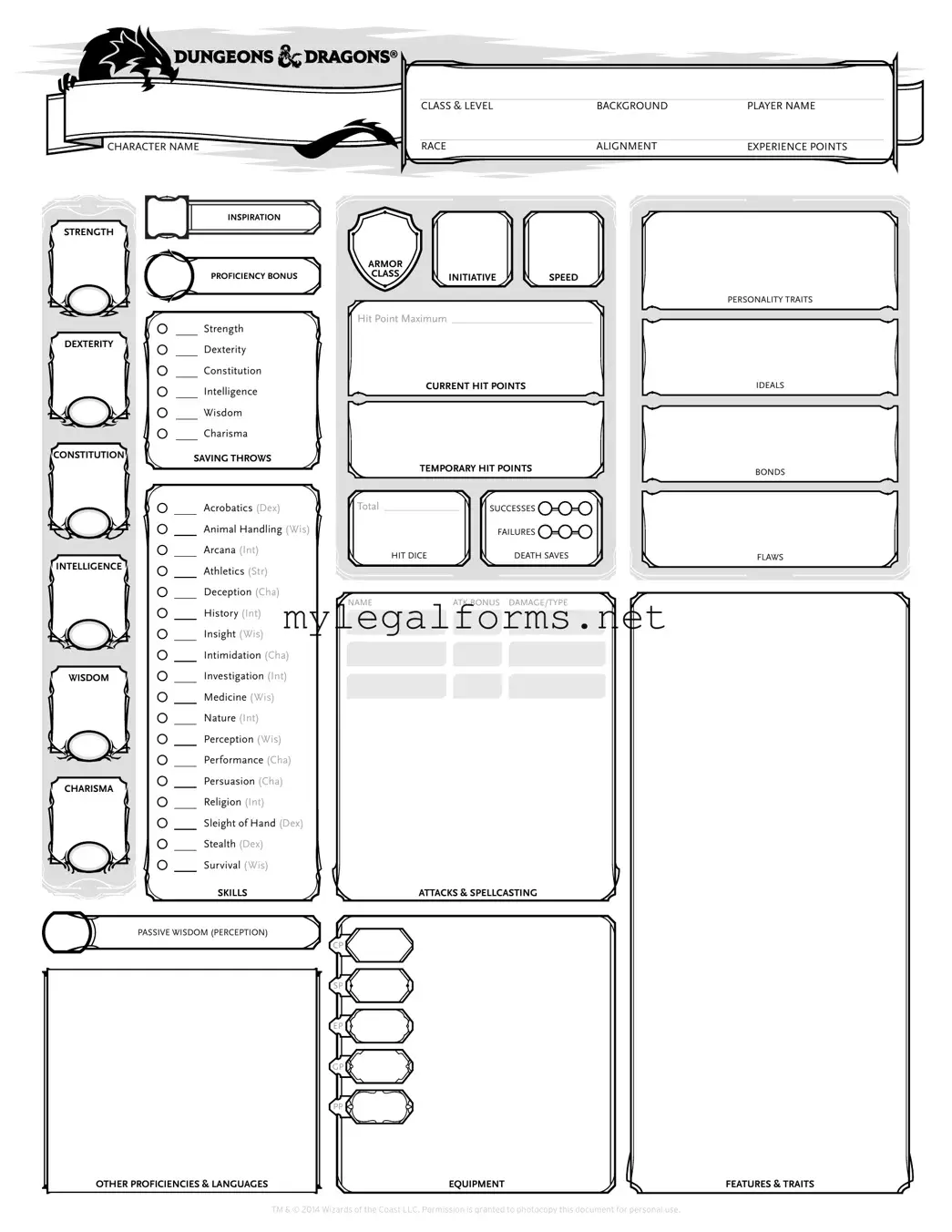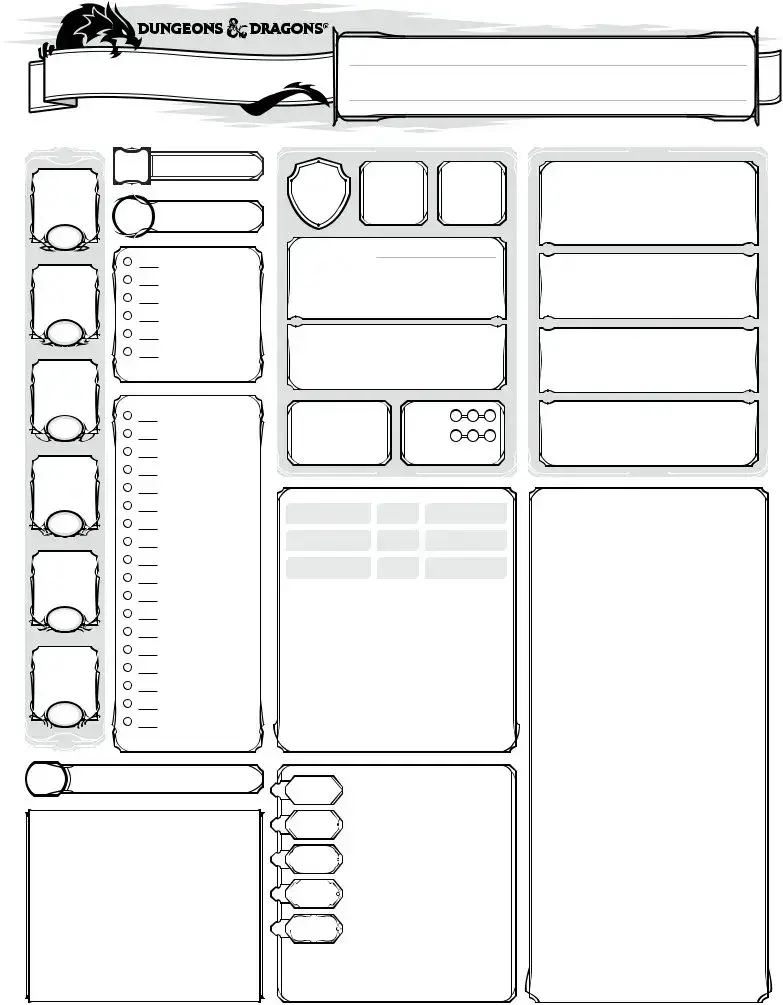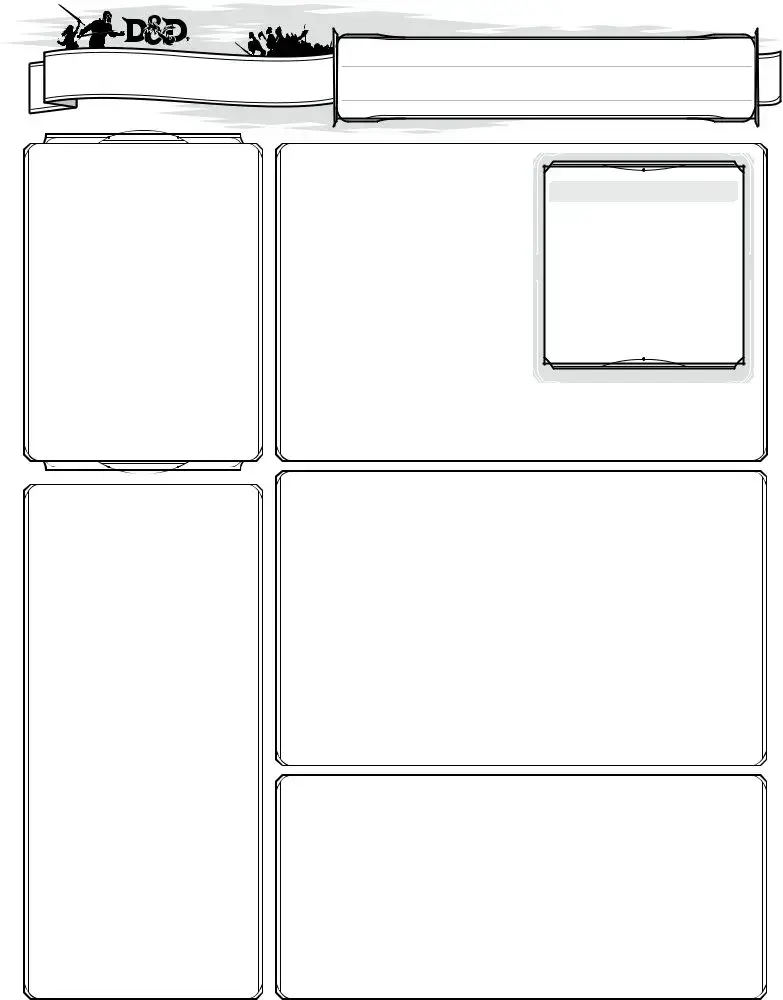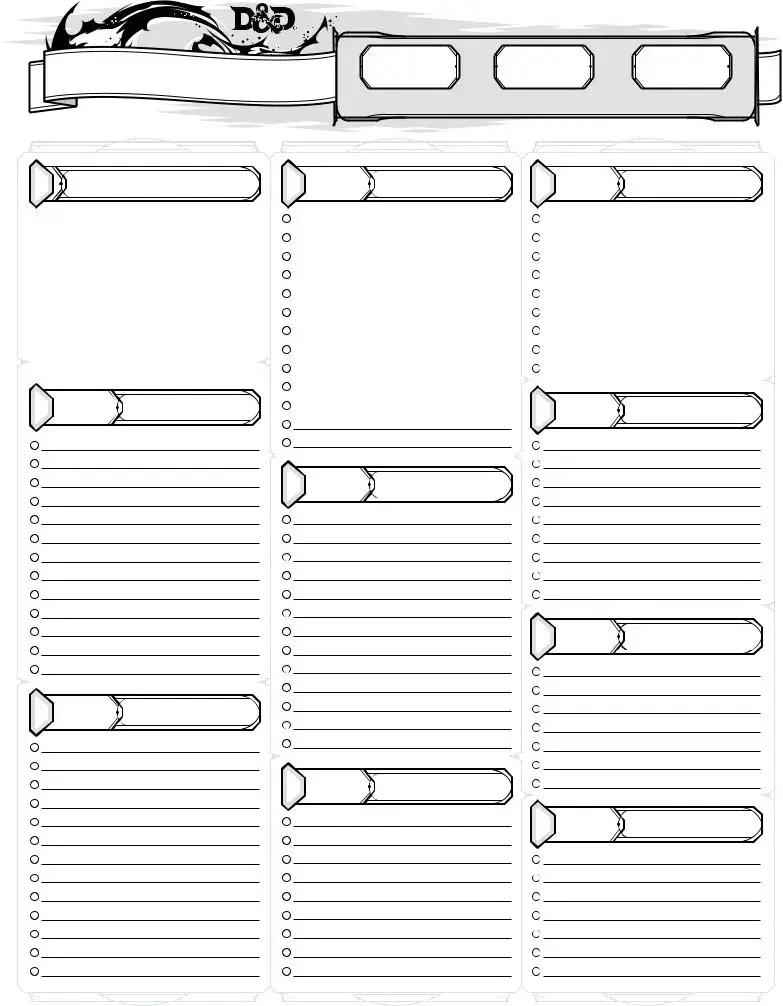The Dungeons & Dragons (D&D) Character Sheet serves as an essential tool for players, providing a comprehensive overview of a character's abilities, skills, and background within the game. This form captures key information such as the character's name, race, class, and level, which are foundational elements that define the character's identity and capabilities. In addition to these basics, the sheet includes sections for recording attributes like strength, dexterity, and intelligence, which influence gameplay mechanics. Players can also note down their character's skills, saving throws, and proficiency bonuses, which are critical for determining success in various challenges. Furthermore, the character sheet allows for the documentation of equipment, spells, and hit points, ensuring that players have all necessary details at their fingertips during gameplay. By organizing this information, the D&D Character Sheet not only facilitates smoother game sessions but also enhances the storytelling experience, allowing players to fully immerse themselves in their characters' journeys.













